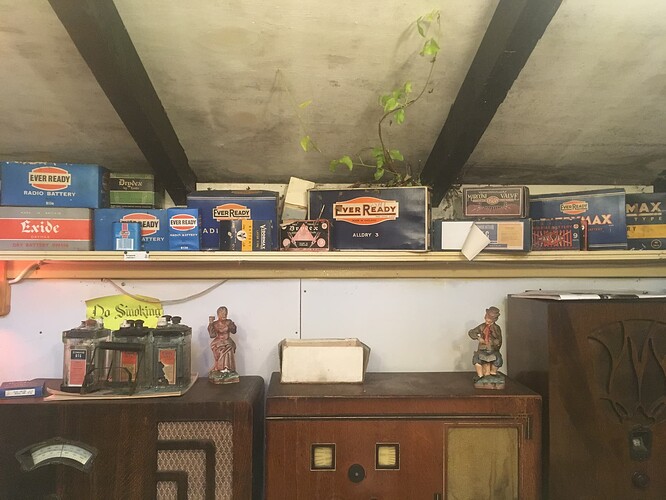These are batteries used to power radios 100 years ago.
The valve sets required 3 batteries for the different circuits of the radio.
The highest power was for the filaments which was provided by a wet LA battery which are on top of the radiogram below. These were often recharged by your local garage because electricity was only available in the rich folk’s houses then. So radio preceded electricity in the home in the UK…(and probably in SA too)
Initially electricity to the home was low power and was only intended for lighting. Prior to that gas (coal gas) lighting was used but was unsatisfactory (dangerous etc.)
Then electrical appliances became available…
My wife’s grandfather had a wind charger for the lead acid battery that powered the radio.
Those were low voltage AC my childhood memory recalls??
That is an interesting question. While most wind turbines are indeed AC today, I believe some of them were in fact DC back in the day. Before silicon diodes were invented, the power and voltage capacity of diodes were quite limited (google around a bit for mercury rectifiers to see what we used!), so typically it was cheaper to use an actual DC generator. Which is why you have them on all the old British cars (with Lucas electronics) from the 50s and 60s. In this case, I think that would be what was used.
That figures. But they generated some arbitrary low voltage… ![]()
An interesting side note on rectifiers.
My grandfather was telling me about how they used to make field radios to listen to news ‘back home’.
One long wire for an antenna. Self would coil on whatever former they could find. Twisted wire capacitor for tuning. And then a really sharp razor pressed lightly against a smoothly fractured piece of coal as a rectifier. Hook that up to a high impedance earphone (the only piece they had to beg/borrow/steal from supplies), and they had a radio.
I remember that I build a FM transmitter way back when I was still on school from a plan that I found in a book. You had to order a catalog or borrow one from a friend and then mail order all the components. We etched our own PC board with an etch pen.
Once basic item was working, the next fase was to improve it. Playing around with longer aerial and different shapes.
At some stage we were testing this long aerial I build. I had a friend sit by the radio in his house and listen while I walked down the street talking on the transmitter to test the distance, and at some stage he came running out of the house waving at me. One of the neighbours was angry because we were talking on their wireless telephones and they need to make a phone call ![]()
(this was before cell phones was invented)
These were called ‘crystal’ radio sets. The big advantage was they didn’t need a battery (just a hellava long wire aerial strung outside like a washing line)
Yup. It is a variant of the crystal radio. I think they were called foxhole radios. The ‘genuine’ crystal radios used an actual crystal with a metal probe (whisker), and you had to gently probe the crystal with the whisker until you miraculously got a rectifying junction, and the radio started working. Apparently ‘tickling the crystal’ was quite a skill back then.
First crystal radio I built used an OA91 - much simpler to use a ‘modern’ glass bead diode than the originals.
Following the lead of waking up a slumbering colleague: @Phil.g00 you must have some story for us??
Not really, crystal radios don’t resonate with me.
